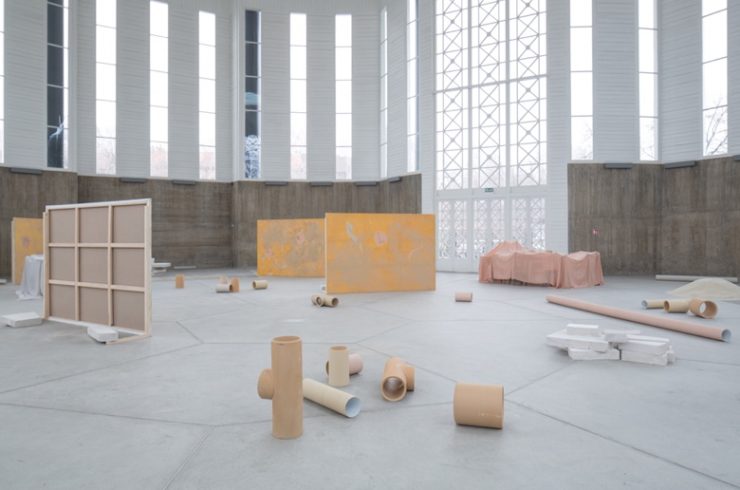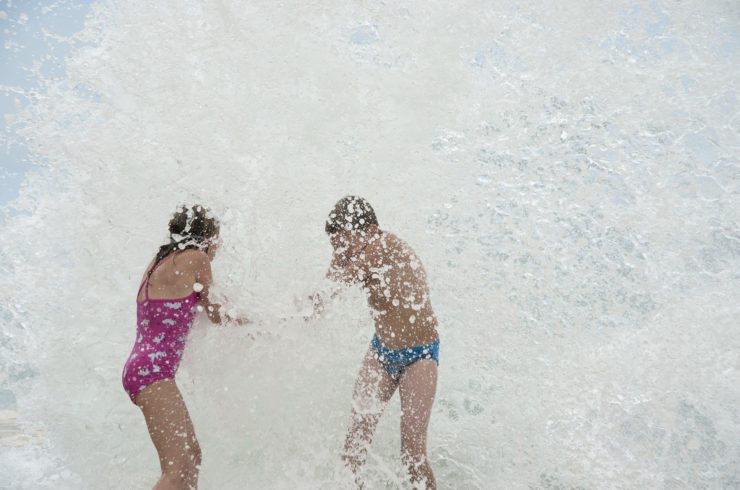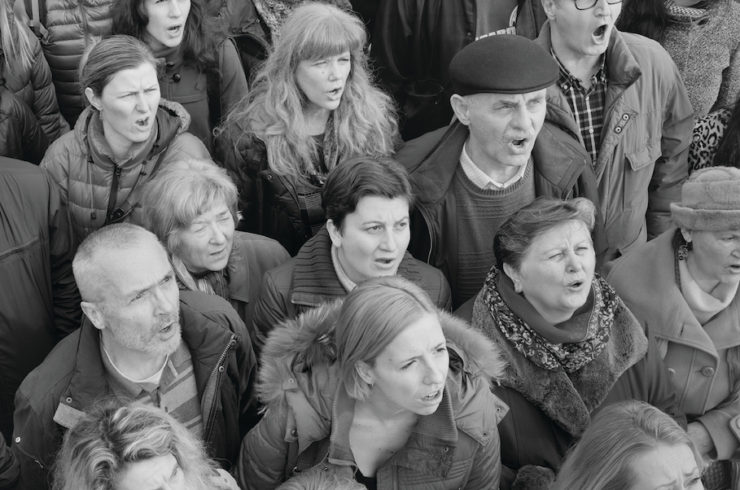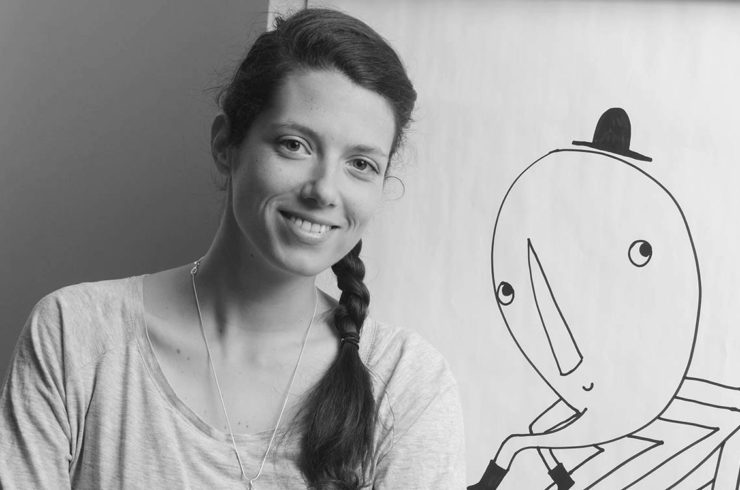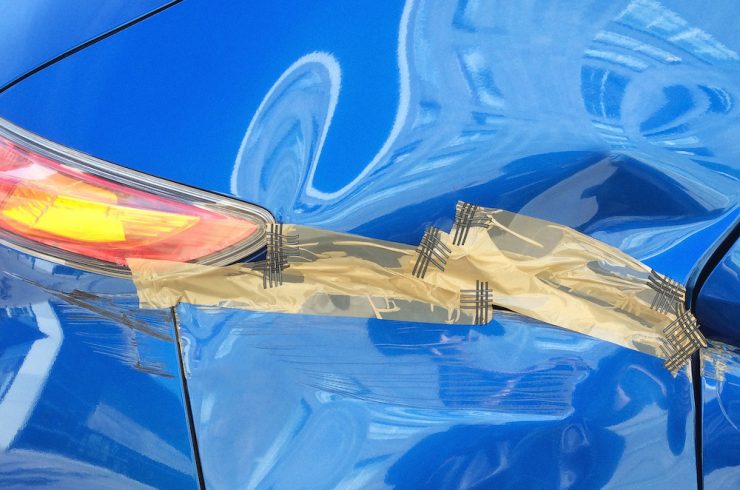Art
Intervening Sculptural Installations – A Survey of Tina Gverović
Tall, thin vertical windows extend high up in the sky, beams of light fill the space above, a circular skylight central in the ceiling. This compact, geometrically crafted temple of culture is an architectural gem left over from another time. Today, the French Pavilion in Zagreb, Croatia built in 1936 has been renovated and readapted into an art exhibition safe haven. Among those artists that have exhibited in this iconic space is Tina Gverović (b. 1975, Zagreb Croatia), a multi-media installation artist who has been chosen to represent Croatia at the Fifty-Seventh Venice Biennale along with Marko Tadić. What may appear at first as a miniature excavation or construction site, filled with cement blocks and piles of sand, starts to reveal itself as an installation with large paintings scattered throughout the space. This is all part of Gverović’s solo exhibition Bodies and Things, Lost and Found (2016) at the French Pavilion in Zagreb, Croatia.
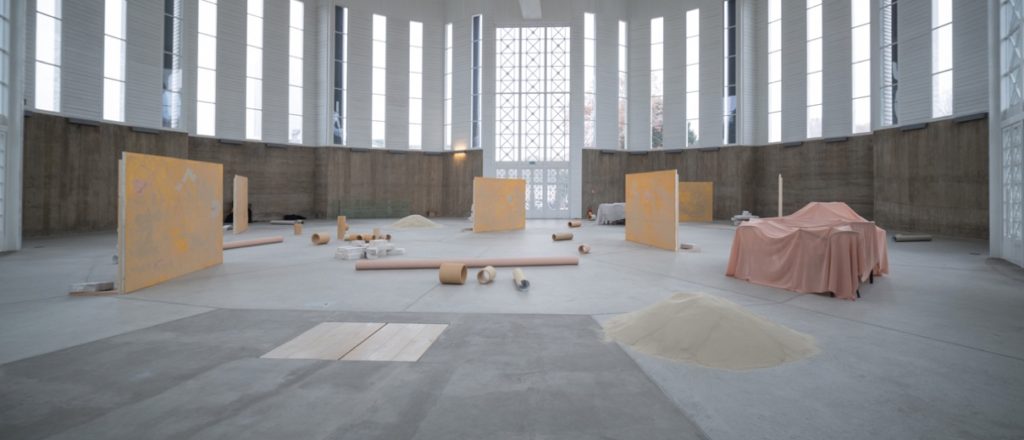
Bodies and Things, Lost and Found
2016
Installation view
French Pavilion, Zagreb
A collaboration with Ben Cain and Alexis Taylor
Photo: Damir Žižić, Ben Cain and Nikola Kuprešanin
The title is an accurate description for what can be seen. Large minimal paintings depict body parts, some recognizable like hands and arms paired with abstract shapes, which could form a human heart or organ. These shapes float in between shadows, areas of shading, and gestural strokes to form a pastel palette of orange, pink, grey, brown and white.
Objects are scattered around the exhibition space. Semi-transparent grey and pink sheets are draped over groups of what looks like restaurant furniture: chairs and tables piled and arranged on top of each other, as if in storage. Cement pipes, cinderblocks, piles of sand and gravel form small clusters around the space – looking messy but at the same time very organized, minimal, clean and thought out. They seem like arbitrary objects, yet they all follow the same color scheme, and have equal distance between them. These objects or “things” make a maze for the viewer to walk around, leading them ultimately to the large paintings that are arranged at different angles throughout.
The movement that is implied in Bodies and Things, Lost and Found is created by the immersive quality of the French Pavilion; it is one, unified, space with no adjoining parts or rooms. The architecture of the space creates a circulation around the paintings, and the surrounding objects, or sculptural interventions act as a pathway for the viewer. Gverović’s multi-media installations, which often incorporate paintings, drawings, sculpture, text, video and audio, tend to utilize the entire gallery space, which creates an immersive experience for the viewer. Gverović deals with universal topics and themes such as movement, bodies, identity, and travel that are expressed through experimental uses of different materials, mediums, research, re-appropriation and transformations of her previous works.
At the Museum of Modern Art in Dubrovnik – Croatia, Gverović’s exhibition Sea of People (2016) used installation to incorporate different inspirations revolving around the Mediterranean Sea. Some of these inspirations were more literal, such as the large wooden structure acting as a raft that held up re-appropriated paintings from her previous series from 2006 and 2007. These small paintings depict situations unfolding around the sea: people floating on a raft (much like the structure the painting rests upon), waves crashing on the shore or boats hidden within waves. The raft that Gverović has created becomes another sculptural intervention that is physically transporting her previous work into a new location and context.
- Sea of People 2016 Installation View Photo: Marko Ercegović
- Detail from Sea of People 2016, Photo: Marko Ercegović
Other elements of the installation are more abstract ideas straying away from the sea, like the digital projection of anonymous texts that read like journal entries. The writing can be interpreted as small glimpses of stories, some of them referring to travelers. The text has a metaphysical feeling; they act as glimpses into Gverović’s overarching themes, such as migration.
A text from the exhibition titled, “In half”
They were let into the mountains just across the frontier and left there. Totally disorientated, some found their way back. They devised a system to protect themselves. Before leaving they had their photographs taken. They tore the photograph in half, giving half to their guide and keeping the other half themselves.
There is an overall sense of separation and preservation of identity. These texts re-emerge in Gverović’s oeuvre. Diamond Cuts: Sea of People an installation piece at the Suzhou Art Museum in Suzhou, China, transformed this text into audio. Unlike an ordinary audio recording of text however, the stories are sung by a collaborator, Alexis Taylor. The stories begin to feel more personalized and nostalgic. Almost like a song you can’t get out of your head, they ring in the gallery space with a simple humming rhythm on a continuous loop. Diamond Cuts: Sea of People includes a sculpture of metal bars, elegantly draped with fine, transparent silk that has been printed with the previously mentioned body part motifs in the large-scale paintings at the French Pavilion. The structure serves as the backbone of the work and as a drawing in space. It connects the dismembered body parts together in a flowing, breathable collage of pieces. The structure allows the viewer to enter and surround the three dimensional collage.
- Diamond Cuts: Sea of People 2016 Installation view
- Diamond Cuts: Sea of People 2016 Installation view detail
In all three of these works, Sea of People, Diamond Cuts: Sea of People, and Bodies and Things, Lost and Found Gverović has incorporated previous works and motifs. As the artist deals with movement and travel, her past works have a continuous rhythm and continue to evolve into new environments. Gverović deals with the temporal nature of the exhibition space by connecting her works together. Its as if the gallery is a drawing point or sculptural intervention in itself from one installation to the next.
Written by: Kelly Foster @kellyhallfoster
